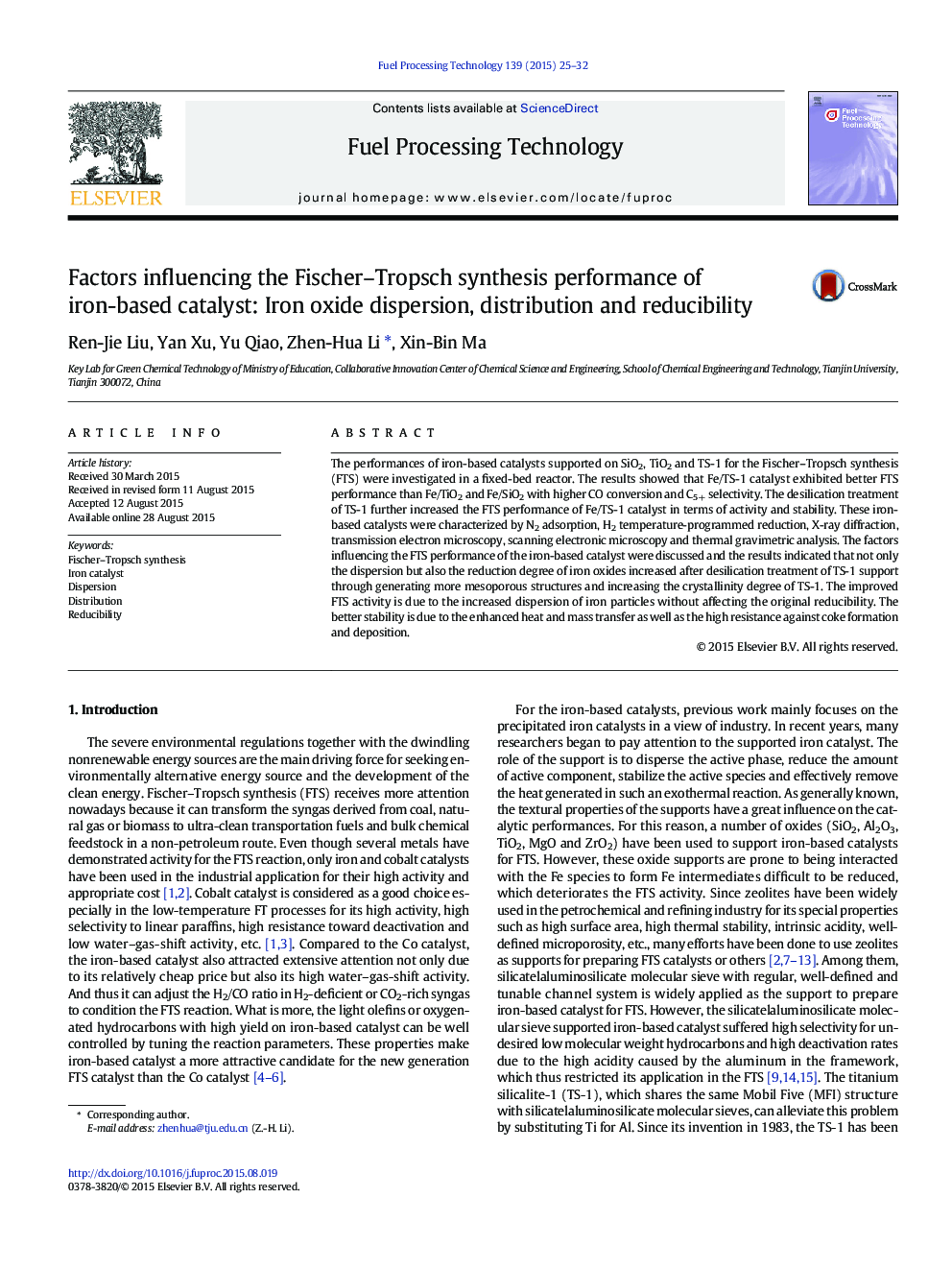| Article ID | Journal | Published Year | Pages | File Type |
|---|---|---|---|---|
| 209427 | Fuel Processing Technology | 2015 | 8 Pages |
•Fe/TS-1 catalyst exhibited better FTS performance than Fe/TiO2 and Fe/SiO2.•The desilication of TS-1 generated more mesoporous structures and increased the crystallinity degree of TS-1.•The desilication of TS-1 increased not only the dispersion but also the reduction degree of iron oxides on TS-1.•The desilication of TS-1 improved the FTS performance of Fe/TS-1 catalyst, getting enhanced activity and stability.
The performances of iron-based catalysts supported on SiO2, TiO2 and TS-1 for the Fischer–Tropsch synthesis (FTS) were investigated in a fixed-bed reactor. The results showed that Fe/TS-1 catalyst exhibited better FTS performance than Fe/TiO2 and Fe/SiO2 with higher CO conversion and C5+ selectivity. The desilication treatment of TS-1 further increased the FTS performance of Fe/TS-1 catalyst in terms of activity and stability. These iron-based catalysts were characterized by N2 adsorption, H2 temperature-programmed reduction, X-ray diffraction, transmission electron microscopy, scanning electronic microscopy and thermal gravimetric analysis. The factors influencing the FTS performance of the iron-based catalyst were discussed and the results indicated that not only the dispersion but also the reduction degree of iron oxides increased after desilication treatment of TS-1 support through generating more mesoporous structures and increasing the crystallinity degree of TS-1. The improved FTS activity is due to the increased dispersion of iron particles without affecting the original reducibility. The better stability is due to the enhanced heat and mass transfer as well as the high resistance against coke formation and deposition.
